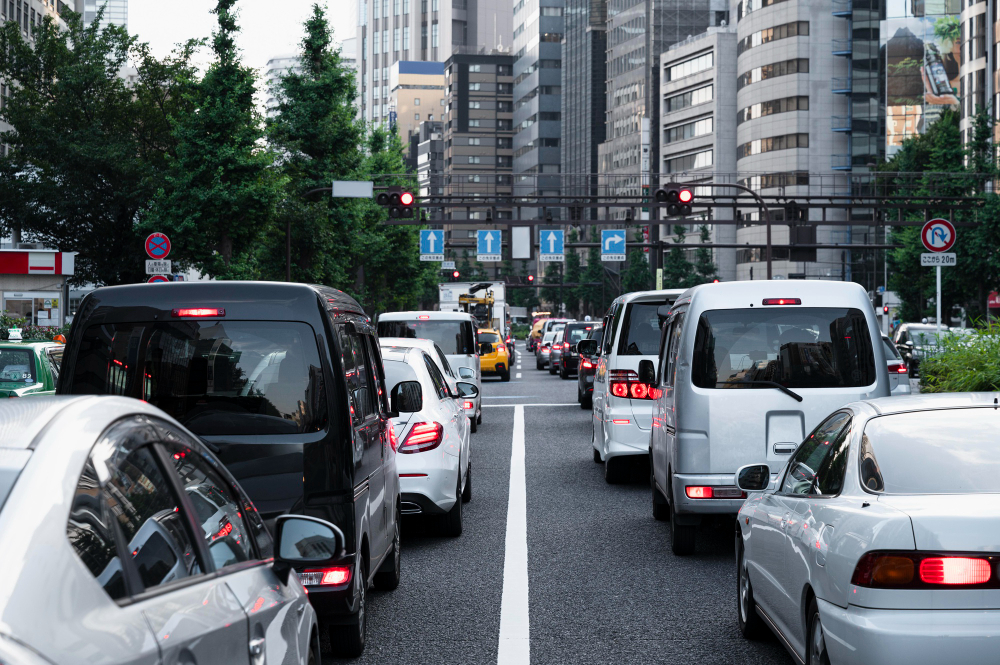Traffic congestion is one of the most persistent problems in modern urban life. Every day, millions of cars crowd the roads, slowing down commutes, increasing air pollution, and raising stress levels for drivers. Yet, the solution might be simpler than it seems — fewer cars on the road.
Reducing vehicle use is not just about avoiding gridlock; it is about creating cities that are cleaner, healthier, and more efficient. By encouraging public transport, cycling, walking, and shared mobility, we can reshape the way cities function and significantly improve quality of life.
The Link Between Car Volume and Traffic Congestion
Traffic congestion happens when too many vehicles try to use the same road space at the same time. Roads and highways have fixed capacity, and once that capacity is exceeded, delays multiply quickly.
When fewer cars are on the road, traffic flows more smoothly because there is less stopping, starting, and idling. Studies show that even a small reduction in vehicle numbers can have a big impact on congestion levels. Removing just 10 percent of cars can lead to much faster travel times for everyone.
In essence, less car volume means roads can handle traffic more efficiently, reducing both travel time and driver frustration.
Environmental Benefits of Fewer Cars
Reducing the number of cars on the road has an immediate positive impact on the environment. Cars are a major source of carbon dioxide, nitrogen oxides, and particulate matter, all of which contribute to air pollution and climate change.
With fewer vehicles, emissions drop significantly. Cities with strong public transportation systems and policies promoting low car use often experience better air quality and reduced greenhouse gas emissions. Cleaner air means fewer respiratory problems and healthier residents overall.
Moreover, fewer cars reduce noise pollution. Streets become quieter, allowing people to enjoy public spaces and nature without the constant hum of engines.
Economic Advantages for Cities and Citizens
Traffic congestion is costly — both for individuals and for cities. Time lost sitting in traffic costs billions in lost productivity every year. Fuel consumption rises when engines idle in gridlock, and wear and tear on vehicles increases maintenance expenses.
Cities that reduce car dependence can redirect resources to public transport and infrastructure improvements. For individuals, less driving means savings on fuel, parking fees, and car insurance. Over time, these small changes add up, creating more financially sustainable communities.
Additionally, walkable and bike-friendly neighborhoods attract more local business because people are more likely to shop and dine close to home rather than drive long distances.
Public Transportation as a Key Solution
Investing in public transportation is one of the most effective ways to reduce car dependency. Buses, trains, and trams can move large numbers of people efficiently, taking dozens of cars off the road with each trip.
Reliable and affordable public transport systems encourage commuters to leave their cars at home. When these systems are integrated with cycling and pedestrian infrastructure, cities can create a seamless mobility network that works for everyone.
Countries like Japan and Germany have long demonstrated how efficient transit systems can minimize traffic, improve punctuality, and enhance overall urban quality of life.
The Role of Shared Mobility and Carpooling
Shared mobility services, such as ride-sharing, carpooling, and car-sharing platforms, offer flexible alternatives to owning a car. By sharing rides, fewer vehicles are needed to transport the same number of people, which directly reduces traffic density.
Carpooling also promotes social connections, lowers travel costs, and reduces emissions per passenger. In cities where traffic congestion is severe, carpool lanes (high-occupancy vehicle lanes) reward shared rides by providing faster travel routes.
These solutions not only cut down on the total number of vehicles but also encourage smarter, more collaborative commuting habits.
Encouraging Cycling and Walking
Active transportation — walking and cycling — is one of the most sustainable and healthy ways to move around cities. Encouraging people to use bikes or walk for short distances can significantly decrease the number of cars on the road.
Cities that invest in safe cycling lanes and pedestrian-friendly streets often see immediate improvements in mobility and community well-being. Amsterdam and Copenhagen are prime examples of how prioritizing bikes over cars leads to less traffic, cleaner air, and happier residents.
Walking and cycling also boost physical fitness and mental health, reducing stress and promoting social interaction.
Smart Urban Planning and Car-Free Zones
Urban design plays a crucial role in how people choose to move. Cities that prioritize compact, mixed-use development reduce the need for long commutes. When homes, workplaces, and amenities are located close together, people can walk or cycle instead of driving.
Many cities are experimenting with car-free zones or “low-traffic neighborhoods.” These areas restrict car access, prioritizing public transport, bicycles, and pedestrians. The result is safer, more vibrant spaces that encourage outdoor activity and community interaction.
Urban planning that focuses on people rather than vehicles leads to healthier, more sustainable cities.
How Technology Helps Reduce Traffic
Technology plays a major role in managing traffic and promoting smarter mobility. Real-time data from GPS, navigation apps, and sensors help drivers avoid congested routes. At the same time, cities use intelligent transportation systems (ITS) to optimize traffic signals and manage road capacity dynamically.
Electric scooters, e-bikes, and smart ride-sharing apps also provide convenient alternatives for short trips, further reducing the need for private cars.
As autonomous and electric vehicles become more common, they will contribute to a more efficient transportation ecosystem — especially when paired with shared mobility systems.
Health and Social Benefits of Fewer Cars
When cities reduce the number of cars, the benefits extend far beyond transportation. Cleaner air, quieter streets, and safer public spaces all contribute to better physical and mental health.
Children can play outdoors without exposure to harmful fumes, cyclists can ride more safely, and pedestrians can enjoy public spaces without fear of traffic accidents.
Socially, fewer cars create stronger communities. People are more likely to engage with neighbors and spend time in shared spaces when streets are designed for people instead of vehicles. This sense of community belonging enhances quality of life and civic pride.
Building a Sustainable Future Through Policy and Behavior
Achieving fewer cars on the road requires a mix of policy, infrastructure, and cultural change. Governments can implement measures such as congestion pricing, car-free days, and incentives for electric vehicles and public transit use.
At the same time, individuals must reconsider their mobility habits. Choosing to walk, cycle, or use public transport a few times a week can collectively make a big difference.
Educational campaigns and city initiatives can encourage people to embrace sustainable transport choices. With cooperation between policymakers, businesses, and citizens, cities can move toward a future that balances convenience with environmental responsibility.
Conclusion
The equation is simple: fewer cars on the road means less traffic, less pollution, and better living conditions for everyone. By rethinking urban mobility, cities can create spaces where movement is efficient, air is clean, and people thrive.
Reducing car dependence is not about eliminating convenience — it is about transforming it. When we invest in public transport, cycling infrastructure, and sustainable design, we move closer to cities that are smarter, greener, and healthier for future generations.
The road to improvement begins with one small decision — choosing not to drive when there’s a better way.
FAQs
1. Why does reducing cars decrease traffic congestion?
Traffic congestion happens when road capacity is exceeded. Fewer cars mean less pressure on that capacity, allowing smoother traffic flow and shorter travel times.
2. What are some ways cities can reduce car use?
Cities can promote public transport, carpooling, cycling infrastructure, and car-free zones. They can also use incentives for public transit and implement congestion charges in busy areas.
3. How does fewer car use affect the environment?
With fewer cars, carbon emissions, air pollution, and noise levels drop dramatically, leading to cleaner air and healthier ecosystems.
4. Can technology help reduce car dependency?
Yes, technology enables smarter mobility solutions through ride-sharing, e-bikes, traffic monitoring, and real-time route optimization, reducing unnecessary car trips.
5. What are the long-term benefits of fewer cars in cities?
Long-term benefits include cleaner air, better health, safer streets, reduced commuting costs, and stronger, more connected communities.
Also read: Assos Cycling Apparel Review: Premium Performance Gear for Serious Riders




Leave a Comment